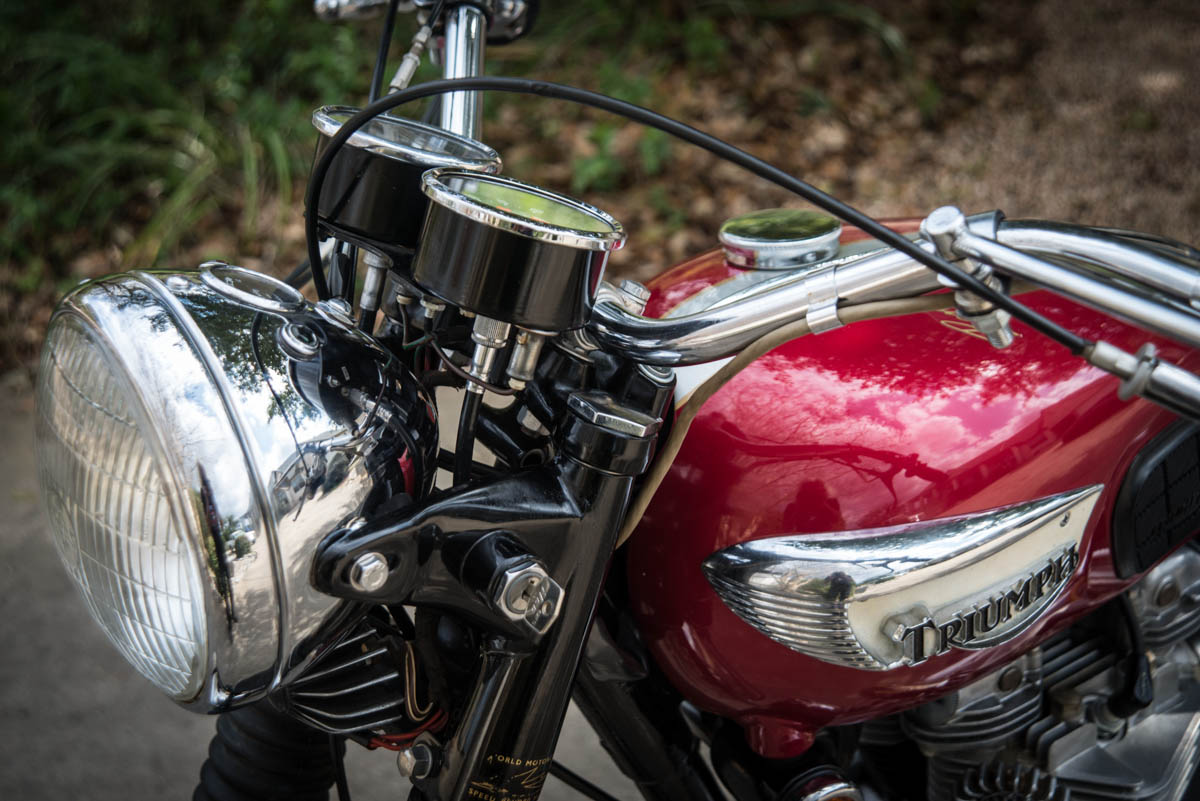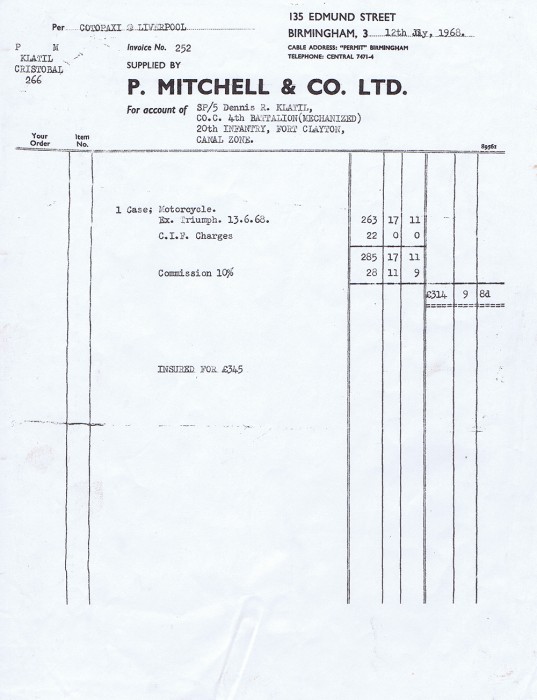
No one can dispute the quality of British engineering during the post war years of the 50’s and 60’s. In fact, it was DURING WWII that the Brits perfected much of their expertise in working with aluminum and extracting ultimate horsepower from their machines. Take note of the great Rolls Royce 12 cylinder Merlin engine, powering not only British Spitfires, but our own P-51 aircraft as well.
During the 1950 and 1960 decades, while Detroit was still cranking out fuel hungry cast iron L-head engines and drum brakes, the glorious British offerings from Jaguar, Aston Martin, and others proudly offered aluminum heads, multiple carburetors, and 4 wheel disc brakes.
And when it comes to motorcycles, the British industry reigned supreme for decades, with their superior engines and nimble, light weight frames.
The indisputable leader of British motorcycling excellence is Triumph. From the first bike built in 1902 to today’s modern high-tech machines, Triumph has led the field.
But it was the Triumph Bonneville, a 650cc twin introduced in 1959, that set the ultimate benchmark, and became the highest selling British twin of all time.
Weighing a mere 363 lbs, the Bonneville is light and tossable, yet solid and steady at speed. It is no wonder that in the 60’s, the Bonneville was the bike of choice for the British rocker cafe racers hanging out at the famous Ace Cafe in London. The ultimate goal of these bikers was to own a motorcycle that could do the “ton”, or 100 miles per hour, and the Bonneville didn’t disappoint in that respect, with a top speed well over 110 miles an hour, and 0 to 60 acceleration that would rival the most sophisticated automobiles.
Many consider the 1968 Bonneville T120R, as presented in the video below, to be the ultimate year in the Triumph line, incorporating a combined engine/transmission unit construction, and being the last model to feature chromed fenders. Additionally 1968 models were first to incorporate the newly designed Amal Concentric carburetors, and were fitted with Twin Leading Shoe front brakes, along with a number of significant engine and frame upgrades.
This particular example, owner by the author, comes with from-new provenance. The original purchase invoice is still with the bike’s papers, showing that a young serviceman stationed in the Canal Zone bought this bike new from the factory in England in 1968, just shortly after it was manufactured.
Of course, book specifications aren’t everything. Any T120 owner will tell you that the handling, performance, and sound of the Bonneville create a unique and desirable bike, unsurpassed by any modern current day machine.
[print_gllr id=920]







Leave a reply